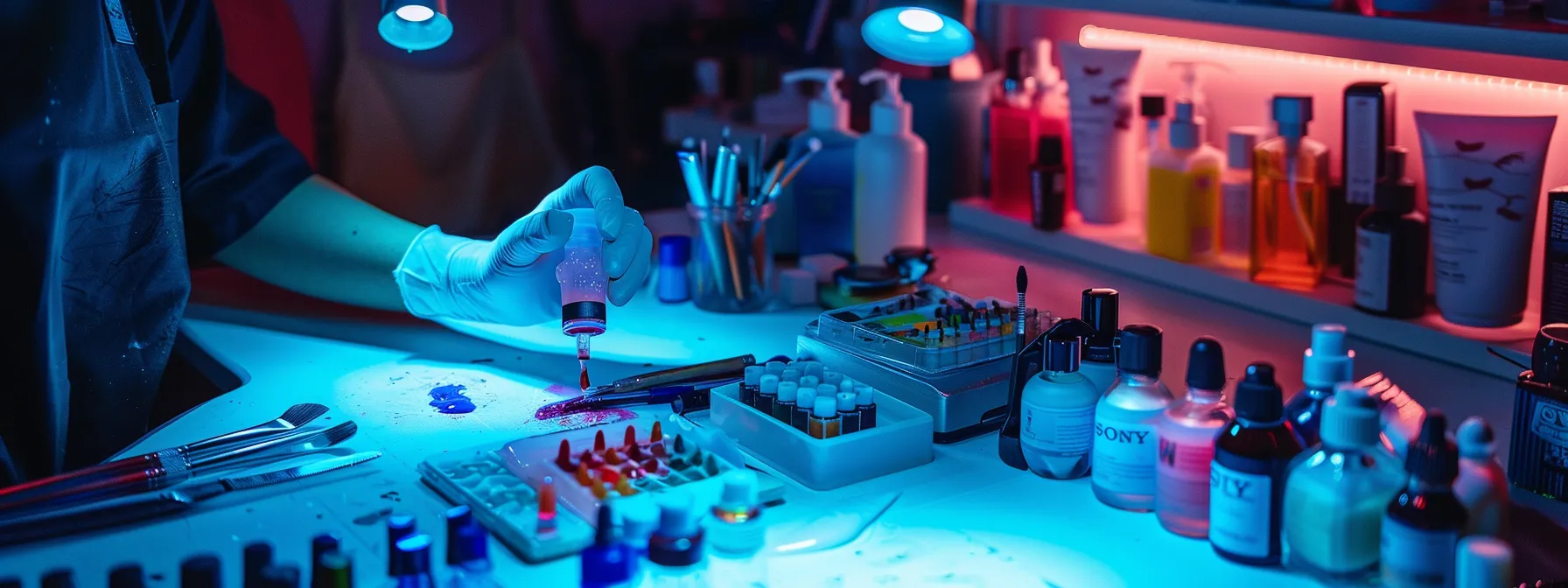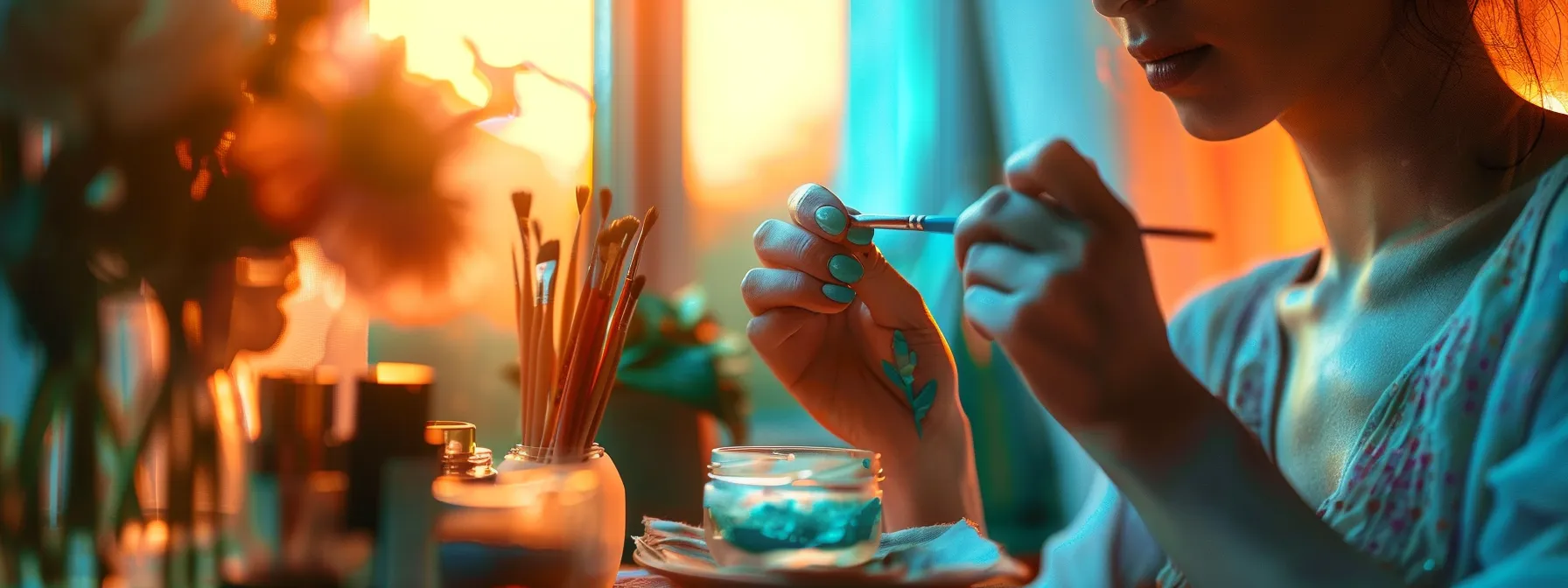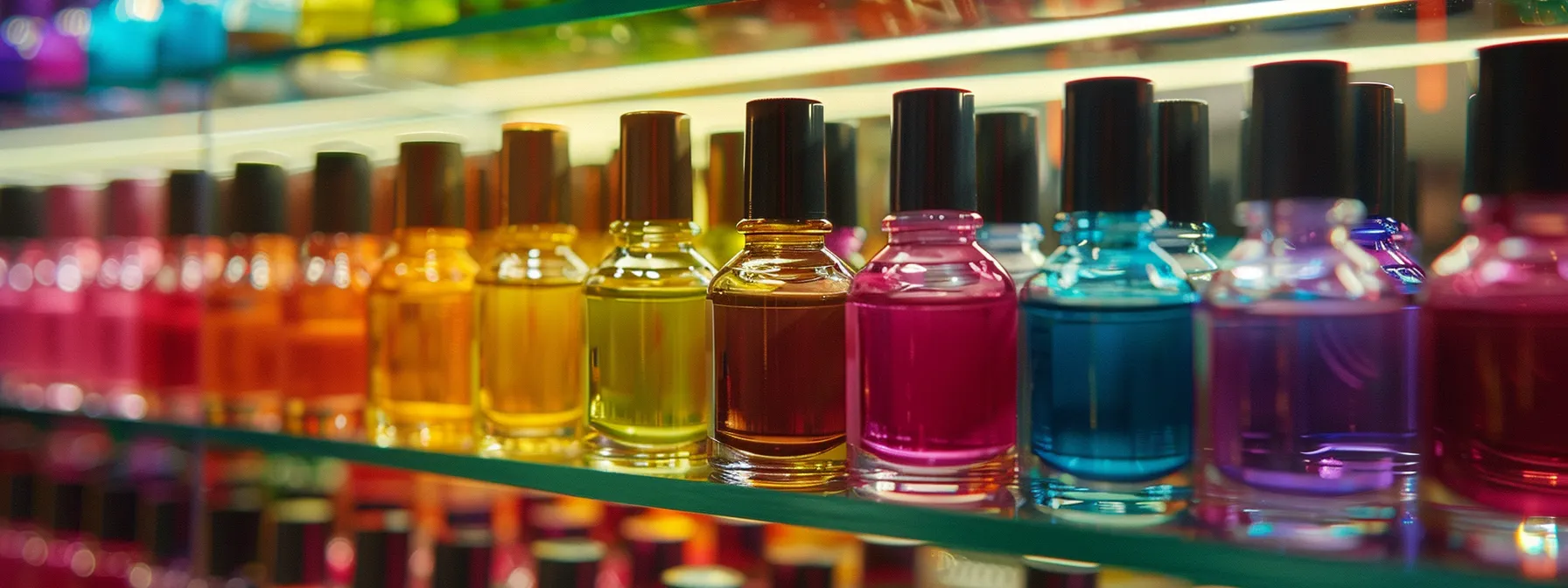The Science Behind Gel Nail Polish Formula
When it comes to nail products, understanding the science behind gel nail polish formulas can elevate both salon services and DIY applications. Many of these high-quality products contain a blend of ingredients such as acetone, aluminum, and specialized powders that contribute to their unique properties. These components work together to create a durable and stunning finish that clients crave. From the way these formulas cure under UV light to the latest innovations shaping the industry, each aspect plays a vital role in performance and safety. Keep reading to uncover the secrets behind gel nail polish and how these formulations are advancing to meet the needs of beauty professionals and enthusiasts alike.
Key Takeaways
- understanding gel nail polish ingredients enhances application and durability
- proper curing timing prevents soft gel and brittleness in manicures
- non-toxic alternatives are emerging, catering to health-conscious beauty enthusiasts
- eco-friendly formulations are becoming a priority in the nail care industry
- innovations in pigment technologies lead to vibrant, long-lasting nail colors and effects
Decoding the Base Ingredients in Gel Nail Polish
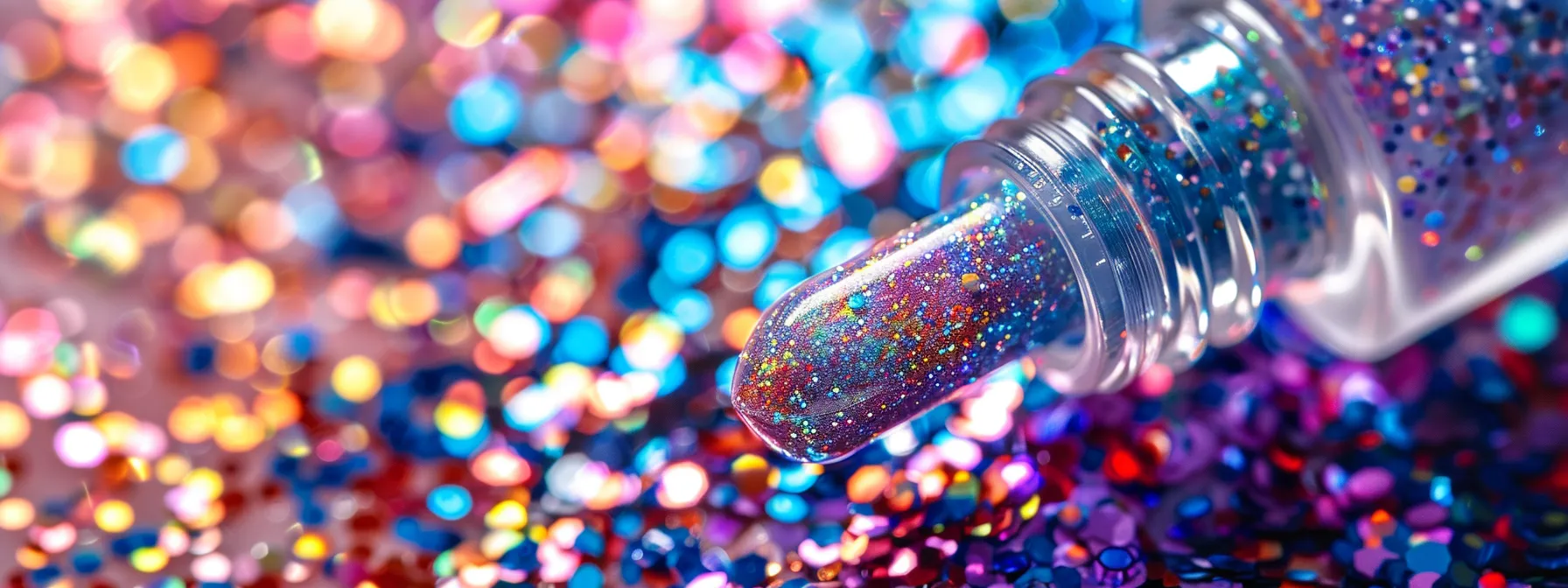
Understanding the base ingredients in gel nail polish goes beyond mere curiosity; it’s essential for anyone looking to maximize their nail artistry lash and nail products. The role of acrylates in the polymerization process is pivotal as they create a robust gel structure when exposed to UV light. Equally significant are photoinitiators, the chemical compounds responsible for activating curing under UV rays, ensuring that the polish hardens effectively. I also find it fascinating how pigments and glitters not only enhance visual appeal but can affect the final product’s durability. Lastly, solvents serve a critical function; they influence the viscosity and application of the gel, determining how smoothly it spreads on the nail. As we unpack these components, I hope you gain a greater appreciation for the science that transforms simple liquids into stunning manicures.
The Role of Acrylates in Setting the Gel Structure
Acrylates are crucial in forming a durable gel structure that can withstand the daily wear and tear of life. When I apply gel nail lacquer, I notice how the acrylate solution quickly transforms under UV light, providing a resilient finish that enhances the overall look of my manicure. This unique ability to create a strong bond not only showcases beautiful color but also ensures my nails remain intact and chip-free for much longer.
Why Photoinitiators Are Crucial for Curing Under UV Light
Photoinitiators play a pivotal role in ensuring that gel nail polish cures correctly when exposed to UV light. These specialized molecules activate a chemical reaction that leads to the formation of copolymer chains, providing the polish with its structural integrity. Without these essential components, I often find that the polish may not achieve the desired hardness or finish, leaving my cuticles vulnerable to damage or the polish at risk of odor-producing degradation.
- Understanding acrylates is key for gel polish structure.
- Photoinitiators ensure proper curing under UV light.
- Color pigments, including chromium, enhance aesthetic appeal.
- Solvents impact the viscosity and application of gel polish.
- Each ingredient contributes to the overall durability and user experience.
Understanding the Importance of Pigments and Glitters
When I think about the role of pigments and glitters in gel nail polish, I realize that they offer more than just aesthetic appeal. Each color I select can greatly influence how the final product performs; for instance, some pigments may contain acid or formaldehyde, which can affect the polish’s curing process and oxidation. As the polish dries, evaporation plays a vital role, ensuring that the layers adhere properly, while the inclusion of oligomers helps achieve the desired consistency and durability on my nails.
Solvents and Their Effect on Viscosity and Application
In my experience with gel nail polish, solvents play a pivotal role in determining how the product behaves during application. Ethyl acetate, for instance, is a key solvent that influences viscosity, allowing me to achieve a smooth application without clumps. As I brush on the polish, I can see how the solvent evaporates, facilitating the chemical reaction needed for the ultraviolet light to cure the gel effectively, ensuring a long-lasting finish.
Now that we’ve uncovered the essential base ingredients of gel nail polish, it’s time to shift our focus to the magic that happens during the curing process. Let’s delve into how this transformative step solidifies color and delivers that stunning, long-lasting finish we all love.
The Curing Process of Gel Nail Polish Explained
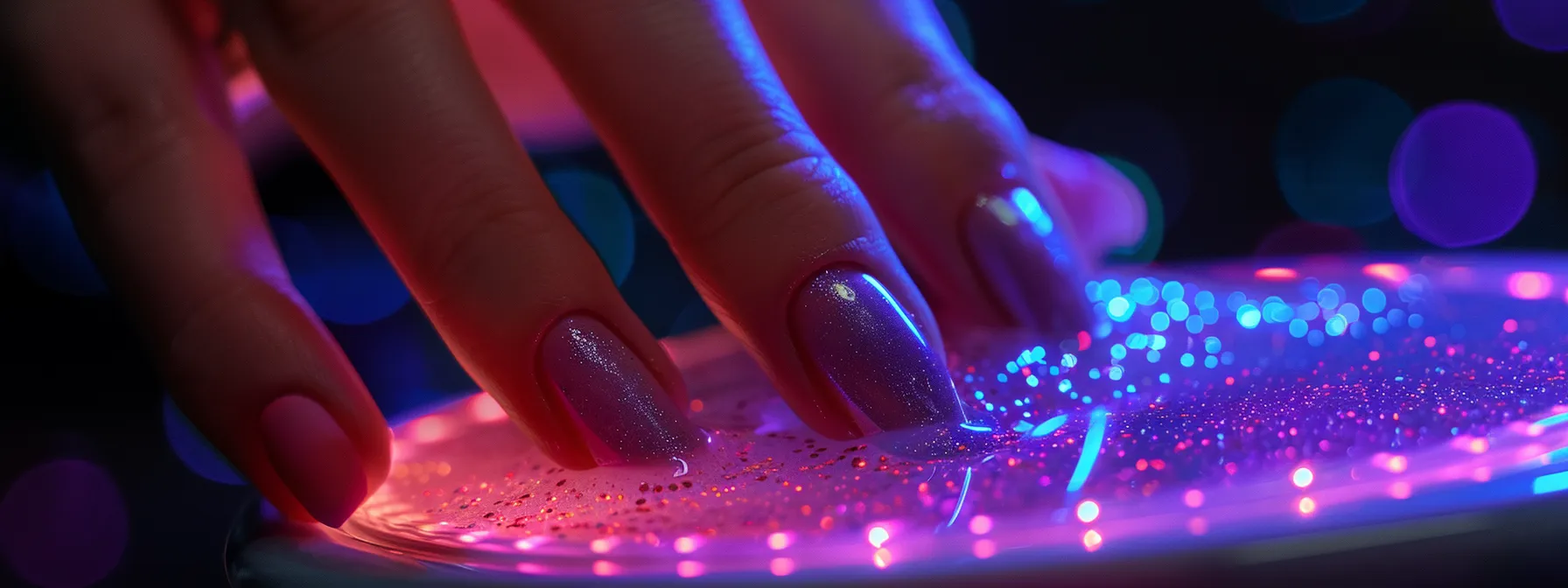
The curing process of gel nail polish is a fascinating interplay of chemistry and technology that ensures beautiful nail art with long-lasting durability. As I apply the polish, I envision how UV light transforms the liquid into a solid, creating that flawless finish I crave. I’ve learned that the type of lamp, whether LED or UV, not only impacts the intensity of the cure but also addresses concerns about toxicity, which is crucial for both my health and hygiene. Timing is equally vital; every second counts in delivering the right result, and the presence of glitter can sometimes complicate how quickly the polish sets. Understanding these factors helps me create stunning artificial nails while minimizing any adverse effects.
How UV Light Transforms the Liquid Into a Solid
As I apply gel nail polish, I become increasingly aware of how the specific wavelength emitted by an LED lamp initiates a chemical reaction within the mixture, solidifying the polish. This transformation is remarkable; the light triggers the photoinitiators and activates the acrylates, resulting in a robust bond. It’s interesting to note that the Food and Drug Administration regulates many aspects of nail products, ensuring a safe experience while using components like bentonite, which can also contribute to the texture and performance.
The Science Behind LED vs. UV Lamps
When I think about the differences between LED and UV lamps, I realize that both play distinct roles in the curing process of gel nail polish. The wavelength emitted by these lamps activates the acrylate molecules, initiating a reaction that ensures the polish hardens properly. With LED lamps, I often notice that the curing is faster and more efficient, possibly due to the reduced solvent evaporation, allowing for better solubility of the ingredients like titanium dioxide, which can enhance the color and opacity of the polish.
Timing and Its Effect on the Curing Process
Understanding the timing during the curing process of gel nail polish is crucial for achieving optimal results. I’ve found that if I underexpose the polish to the UV or LED light, the gel may remain soft and susceptible to smudges, while overexposure can lead to brittleness and a compromised finish. Maintaining the right balance ensures the polymer chains form correctly, while also permitting any moisture trapped beneath the surface to evaporate, resulting in a perfect manicure.
Here’s a breakdown of the critical aspects of timing during the curing process:
Understanding the curing process is just the beginning. Let’s delve into what makes gel nail polish so durable and long-lasting in everyday use.
The Durability of Gel Nail Polish
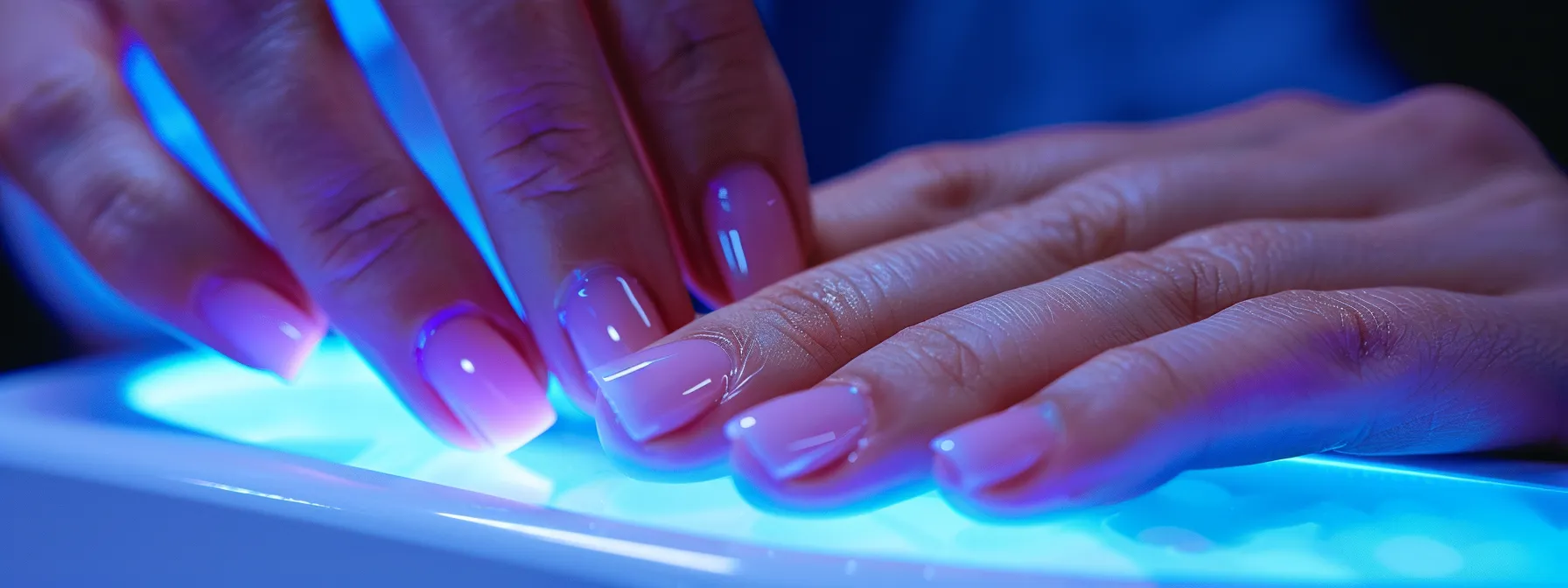
Understanding the durability of gel nail polish involves a closer look at the chemical bonds that form during the curing process. As I work with these formulas, I’ve come to appreciate how the formation of double bonds between molecules creates a resilient structure that effectively prevents chipping and peeling. The role of photoinitiators cannot be overlooked; they initiate the curing process when the gel is exposed to light, allowing for stronger adherence to the nail. I’ve learned that a high-quality top coat plays a crucial part in extending the wear of my manicure, acting as a protective layer that enhances shine while guarding against daily wear. Additionally, various factors, such as the quality of the oxide pigments used and the overall manufacturing process, significantly influence the longevity of my gel manicure, ensuring that it lasts impressively while maintaining a flawless appearance.
Chemical Bonds That Prevent Chipping and Peeling
The strength of gel nail polish largely relies on the chemical bonds formed during the curing process, and I’ve noticed how iron oxide in the formula can enhance the polish’s durability. This substance acts as both a colorant and a thickening agent, creating a more substantial coat that adheres firmly to the nail surface. As a result, I experience less irritation and a reduced risk of chipping and peeling, ensuring that my manicures remain intact for longer periods with a pristine finish.
The Role of the Top Coat in Extending Wear
The top coat serves as an essential layer that significantly enhances the durability of my gel nail polish. As I apply it, I ensure that it includes components like iron oxides which contribute to its strength and resilience against wear. I also find that the absorption of oils from my hands can affect the longevity of the polish; therefore, not only does a high-quality top coat seal in color, but it also creates a barrier that safeguards against environmental factors, while the violet tint can subtly enhance the overall aesthetic appeal of the finished manicure.
Factors That Influence the Longevity of a Gel Manicure
In my experience with gel manicures, I’ve realized that several factors can significantly impact their longevity. For instance, the use of cotton pads when removing nail polish can result in fibers that may inadvertently cling to the nails, affecting the overall finish. Additionally, I’ve learned that certain ingredients, like benzoyl peroxide, can create radicals when exposed to UV radiation, which may weaken the polish over time and affect its durability. I’ve come to appreciate how the materials around me, like plastic in tools or coverings, can also play a role in ensuring my manicures stay vibrant and intact for as long as possible.
As we appreciate the impressive durability of gel nail polish, it’s time to shift our focus to the exciting advancements shaping its formulas. These innovations not only extend wear but also enhance the overall experience for both professionals and beauty enthusiasts alike.
Innovations in Gel Nail Polish Formulas
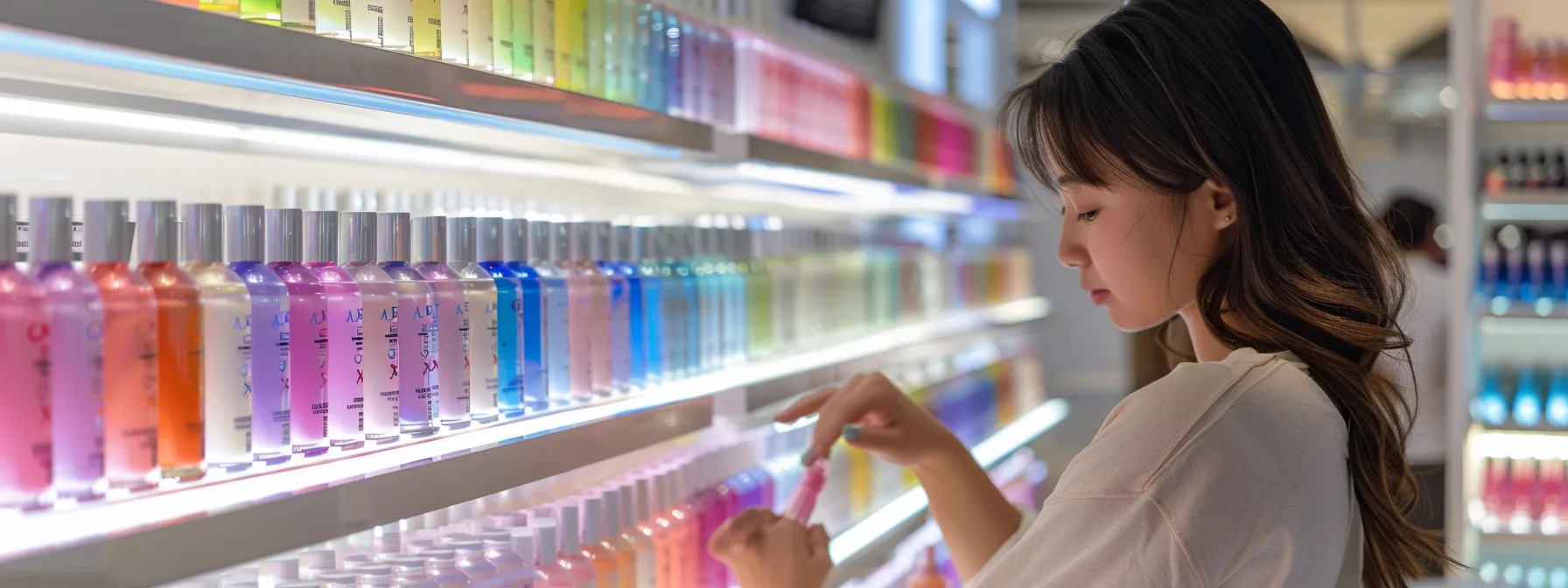
As I navigate the evolving landscape of gel nail polish, I am excited to see the emergence of non-toxic alternatives that prioritize health without compromising on performance. I’ve noticed that many brands are now utilizing ingredients like nitrocellulose to maintain the desired viscosity while minimizing harmful chemicals. This shift not only aligns with a growing demand for safer beauty products but also embraces advancements in quicker drying times, which cater to my busy lifestyle. Additionally, the development of peel-off gel polishes has revolutionized ease of application and removal, allowing me to experiment with bold pigments without the usual commitment. These innovations are reshaping my nail art experience and expanding my creative possibilities.
Non-Toxic Alternatives Gaining Popularity
In my journey through the world of nail care, I’ve become increasingly aware of the rising trend for non-toxic gel nail polish alternatives. Brands are responding to consumer demand by replacing harsh chemicals with safer, more natural ingredients without sacrificing performance. This shift not only supports a healthier beauty routine but also empowers me to explore innovative options that make my manicures both gorgeous and guilt-free.
Breakthroughs in Quicker Drying Times
In my experience, recent advancements in gel nail polish formulas have dramatically improved drying times, making the application process more efficient. I’ve noticed that brands are incorporating specialized resin components that allow the polish to cure faster under LED lights, which is a lifesaver for someone like me who often juggles a busy schedule. This innovation not only enhances the overall manicure experience but also encourages me to explore bolder colors and designs without the fear of lengthy wait times.
The Development of Peel-Off Gel Polishes
The introduction of peel-off gel polishes has transformed the manicure experience by offering a new level of convenience and flexibility. I’ve found these products particularly appealing since they allow for easy application and removal, which means I can switch up my nail color or design without the hassle of soaking in remover or dealing with damaging scrubbing. This innovation caters to those of us who love experimenting with nail art but seek options that are gentle on the nails.
While the advancements in gel nail polish formulas showcase exciting trends, it’s essential to examine the health and safety aspects associated with their use. As we embrace these innovations, understanding their impact on our well-being becomes paramount.
Health and Safety Considerations in Gel Nail Polishes
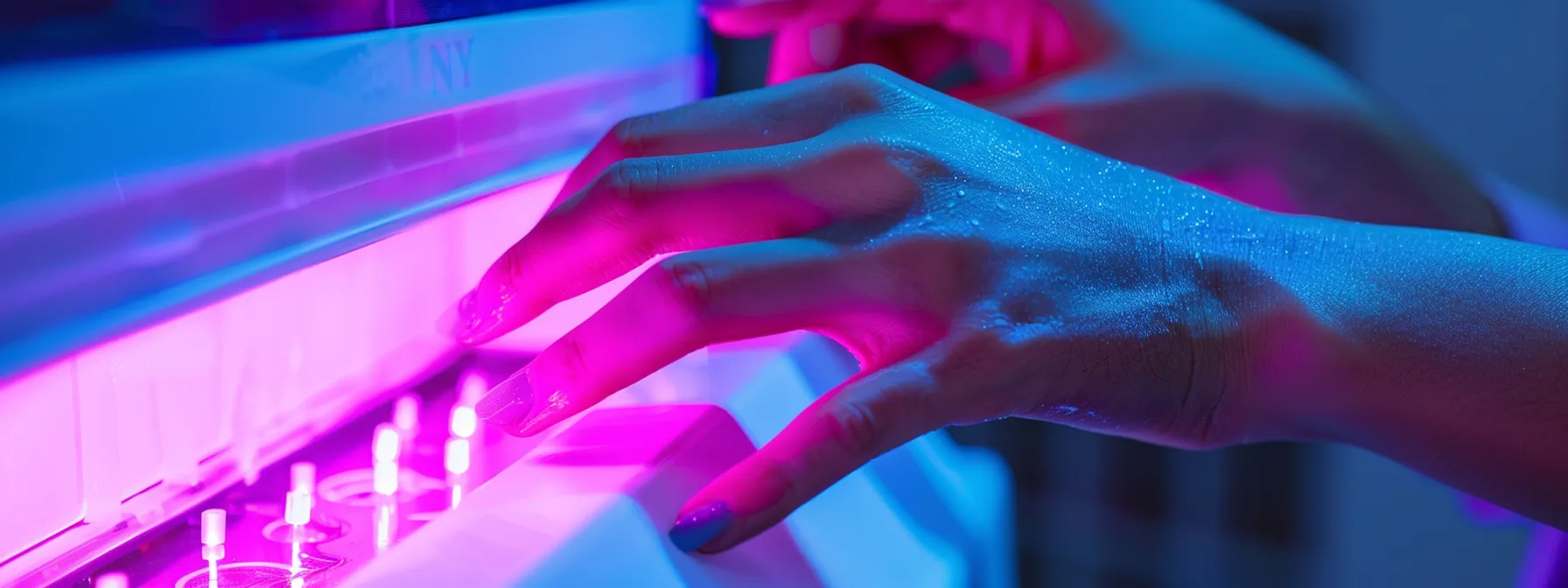
As I delve deeper into the realm of gel nail polishes, I recognize that health and safety considerations are paramount. I’ve grown more aware of the risks associated with UV exposure during the curing process, prompting me to think critically about how I can protect my skin while achieving beautiful nails. The harsh reality is that extended chemical exposure can impact my nail health, making it essential to choose products wisely. I’ve made it a point to find effective strategies for safely removing gel polish to minimize damage to my natural nails. By understanding these key areas, I feel more empowered to enjoy my nail care routine without compromising my well-being.
Assessing the Risks of UV Exposure During Curing
As I consider the potential risks of UV exposure during the curing process, I find it important to be proactive in protecting my skin. The harm from UV rays can accumulate over time, leading to skin damage or increasing the risk of conditions like skin cancer. I ensure that I take precautions, such as applying sunscreen to my hands and wearing protective gloves, to minimize this risk while still enjoying my beautiful gel manicures.
The Impact of Chemical Exposure on Nail Health
As I reflect on my experiences with gel nail polish, I’ve become keenly aware of how chemical exposure can affect nail health. Prolonged contact with certain ingredients may lead to weakened nails and adverse reactions, which is why I prioritize using high-quality products. By choosing formulas with less harmful substances, I believe I can maintain the integrity of my natural nails while still enjoying the vibrant colors and long-lasting finishes that gel polishes offer.
Tips for Safely Removing Gel Nail Polish
When it comes to safely removing gel nail polish, I make sure to use acetone-based removers that are specifically formulated for this purpose, as they effectively break down the polish without excessive scrubbing. I also take my time, allowing the remover to soak for a few minutes before gently pushing the polish off with a wooden stick to minimize damage to my natural nails. After removal, I apply a nourishing cuticle oil to restore moisture and maintain the health of my nails, ensuring they remain strong and resilient for my next manicure.
As we acknowledge the importance of health and safety in gel nail polishes, innovations are already on the horizon. The future of gel nail polish formulations promises even better options for both professionals and enthusiasts alike.
The Future of Gel Nail Polish Formulations
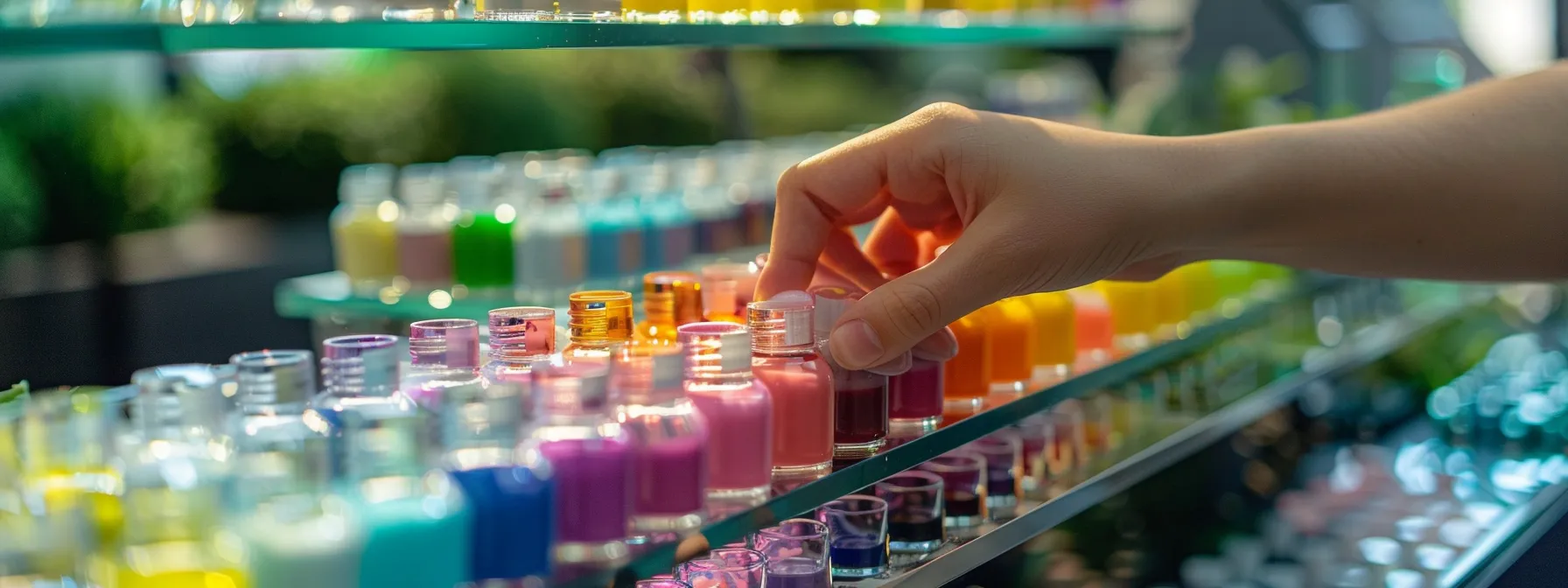
I’ve been observing some exciting trends in gel nail polish formulations that point towards a brighter and more sustainable future. The industry is making significant strides in developing eco-friendly options, allowing me to indulge my passion for nail art while caring for the environment. Additionally, there’s immense potential for innovative pigment technologies that can introduce vibrant colors and unique effects, adding even more flair to my manicures. I’m particularly intrigued by the ongoing exploration of longer-lasting formulas that promise greater durability without sacrificing the ease of application. These advancements not only enhance my nail care experience but also reflect a growing awareness of health and safety within the beauty community.
Trends Leading Towards More Eco-Friendly Options
As I observe the nail care industry, I’m encouraged to see a shift toward eco-friendly formulations in gel nail polish. Many brands are now prioritizing sustainable ingredients, reducing harmful chemicals, and adopting environmentally conscious practices throughout their manufacturing processes. This trend aligns with my values, allowing me to enjoy vibrant manicures while contributing to a healthier planet.
Potential for New Pigment Technologies and Effects
I’m thrilled by the potential of new pigment technologies emerging in gel nail polish formulations. Innovations in this area could lead to more vibrant colors and unique effects that capture the latest beauty trends while enhancing the overall manicure experience. I am particularly excited about advancements that allow for color-shifting effects, which create a dynamic look that changes with light or angle.
- Emergence of vibrant colors that stand out.
- Development of unique effects like color-shifting properties.
- Ability to align with current beauty trends.
- Improved performance without sacrificing aesthetics.
Exploring the Possibility of Longer-Lasting Formulations
I am genuinely intrigued by the potential for longer-lasting formulations in gel nail polish. These advancements promise not only to extend the lifespan of my manicures but also to enhance their overall resilience against chips and wear. As brands innovate, I’m optimistic that I will soon have access to products that offer exceptional durability while maintaining their vibrant color and finish.

